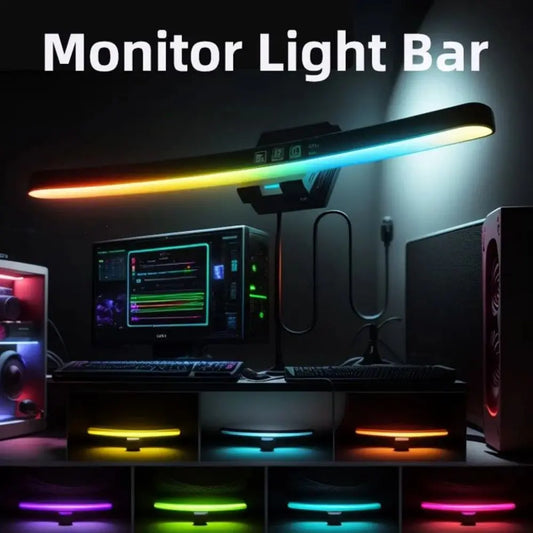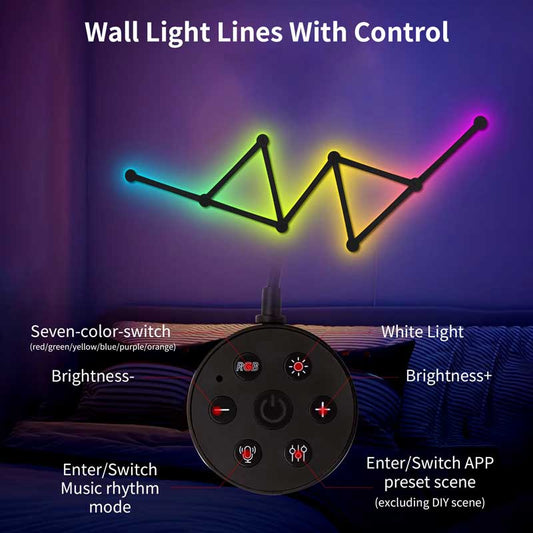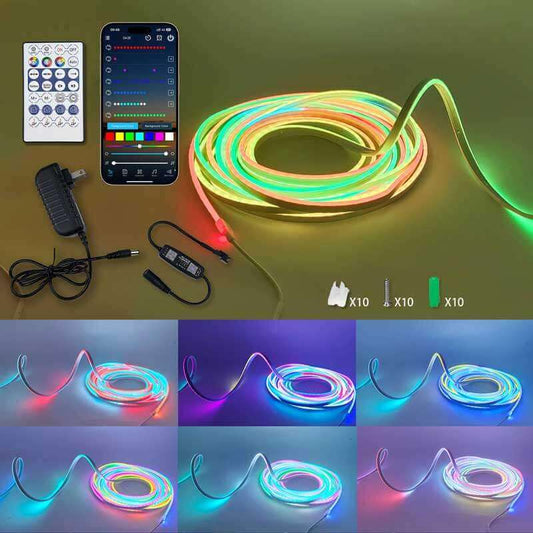What is the light law in the UK?
Share
In the UK, light pollution, which can come from excessive outdoor lighting, is governed by several laws and regulations designed to limit the impact of artificial lighting on the environment, human health, and wildlife. These laws cover various aspects of light use, including outdoor lighting in residential and commercial properties, and are especially concerned with reducing "skyglow," light trespass, and glare.
Key Regulations and Laws on Lighting in the UK
1. The Clean Neighbourhoods and Environment Act 2005
This Act addresses various forms of environmental nuisance, including light pollution. It allows local authorities to take action against light pollution if it is deemed to be a nuisance to neighbors or wildlife. Under this law, individuals can report excessive or unnecessary lighting to their local council, which may issue a notice requiring the removal or reduction of the light source.
2. Planning Policy and Light Pollution
Local councils have specific planning policies relating to outdoor lighting, especially for new developments or commercial properties. These policies ensure that new lighting installations do not create light pollution that could affect nearby residents or the local environment. Planning policies vary from area to area, but many councils require planning permission for large outdoor lighting installations.
-
The Institute of Lighting Professionals (ILP) published the Guidance Notes for the Reduction of Light Pollution, which provide detailed advice on how to prevent unnecessary light spill and mitigate its impact.
-
Night-time Economy: Local authorities may also have regulations about the use of lights for businesses in areas like the "night-time economy," balancing the need for safety and visibility with the prevention of excessive light pollution.
3. The Wildlife and Countryside Act 1981
This law covers the protection of wildlife, including species that may be negatively impacted by artificial lighting. It aims to protect habitats from disruption caused by excessive light pollution. For example, lighting may affect nocturnal animals like bats and certain species of birds. In some sensitive areas, especially near protected wildlife zones, strict regulations may govern the installation of outdoor lighting.
4. The Environmental Protection Act 1990
The Environmental Protection Act addresses various forms of environmental nuisance, including excessive lighting. Under this law, light that causes a "statutory nuisance" can be reported to the local council. This may include lighting that is considered to be an "unreasonable" disturbance to nearby residents, especially if it affects their ability to sleep or enjoy their property.
5. The National Planning Policy Framework (NPPF)
This framework guides how planning and development should proceed in the UK. Section 15 of the NPPF emphasizes the importance of conserving and enhancing the natural environment, which includes managing light pollution. Developers are expected to take steps to avoid, reduce, or mitigate light spill from new developments, especially in rural areas or areas of natural beauty.
6. Outdoor Lighting and Business Regulations
Businesses that use external lighting, particularly for advertising or security, must ensure that their lights do not cause unnecessary light pollution. Businesses must comply with local council planning rules, including having a lighting design that avoids light spill into surrounding properties. Excessive lighting that interferes with residential areas, causes glare, or creates safety hazards may be subject to fines or enforcement actions.
Types of Light Pollution Covered by the Law
-
Skyglow: The brightening of the night sky over populated areas, caused by scattering of artificial light by atmospheric particles. This makes it difficult to see stars and disrupts nocturnal wildlife.
-
Glare: Excessively bright lighting that causes discomfort or reduces visibility for drivers and pedestrians. This is a particular concern for streetlights and commercial signage.
-
Light Trespass: Light that spills over into areas where it is not needed, such as lighting that shines into neighbors’ windows. This can interfere with the quality of sleep and privacy.
-
Clutter: Overuse of bright, non-directional lighting, often seen in areas like shopping streets or amusement parks. Clutter can disorient people and disrupt wildlife.
Key Points on Outdoor Lighting:
- Use of motion sensors and timers is encouraged to reduce unnecessary light during the night.
- Downward-facing lights should be used to reduce light spill and glare into neighboring properties.
- LED lights are commonly recommended due to their energy efficiency and ability to reduce light pollution when used appropriately.
- Consideration of wildlife habitats is crucial, especially when installing lights near parks, forests, or rural areas.
Enforcement and Complaints
If you believe that a neighbor's outdoor lighting is causing a nuisance, you can contact your local council or the Environmental Health Department. They will assess whether the light constitutes a statutory nuisance under the Environmental Protection Act 1990. If they find that the lighting is excessive, they can issue a notice requiring the individual or business to reduce the lighting.
In certain cases, legal action may be taken if an individual refuses to comply with the notices.
Additional Resources
- The Institute of Lighting Professionals - Guidance Notes for the Reduction of Light Pollution
- UK Government - Clean Neighbourhoods and Environment Act 2005
- Wildlife and Countryside Act 1981
These laws and guidelines help to ensure that lighting is used responsibly, especially when it comes to reducing light pollution, preserving natural habitats, and ensuring the comfort of the local community.




